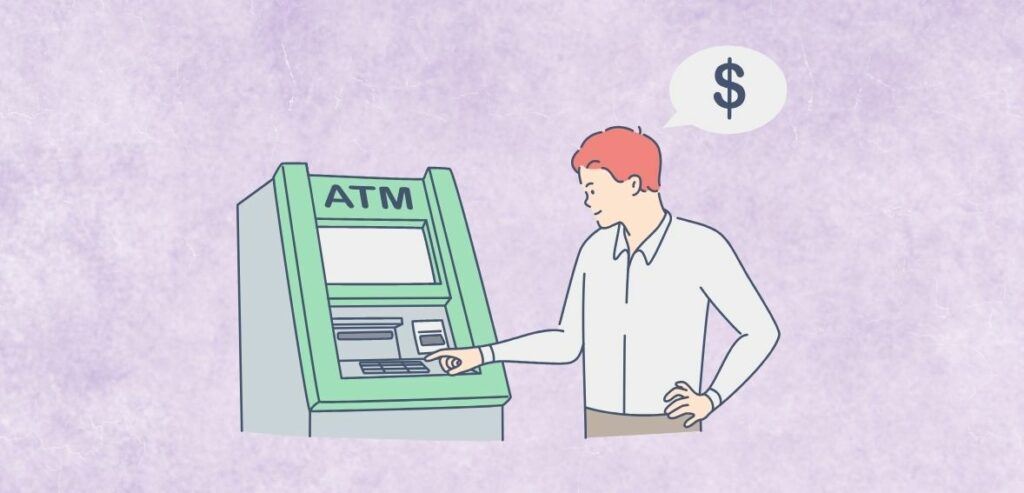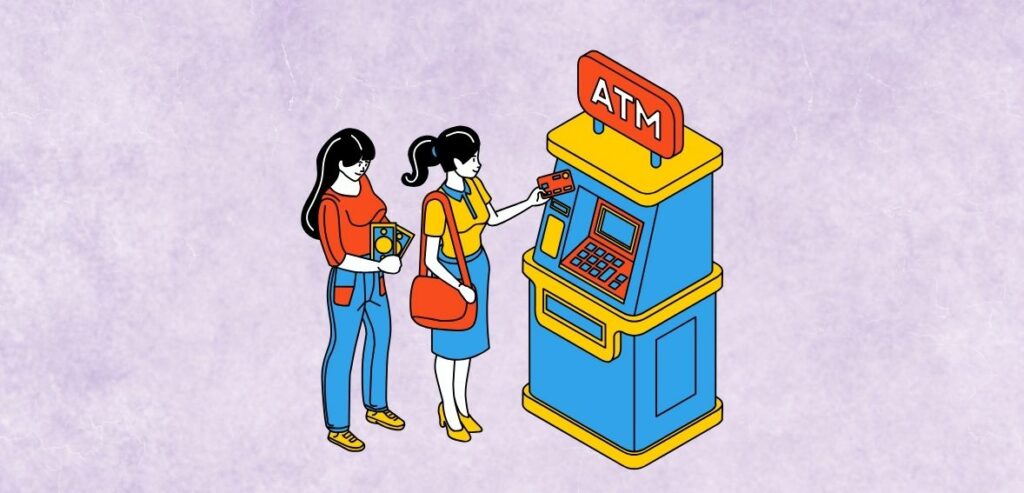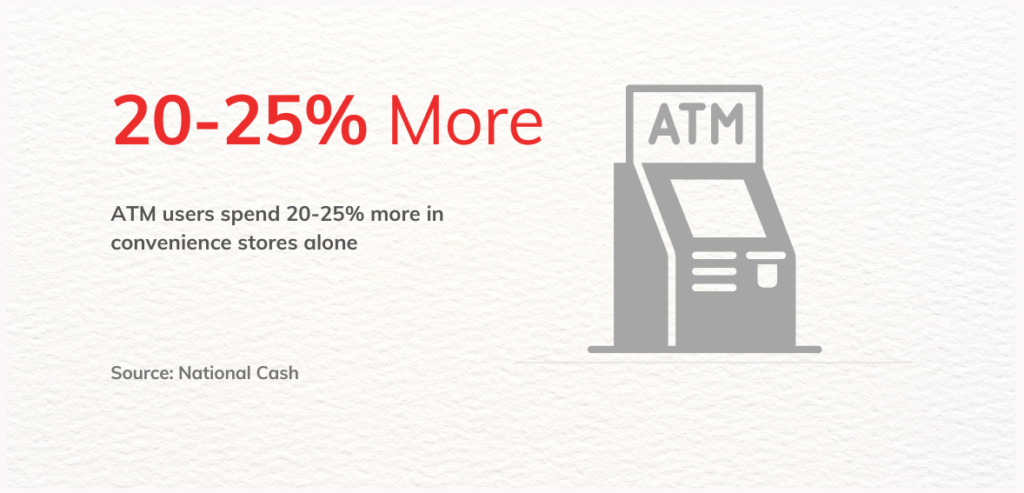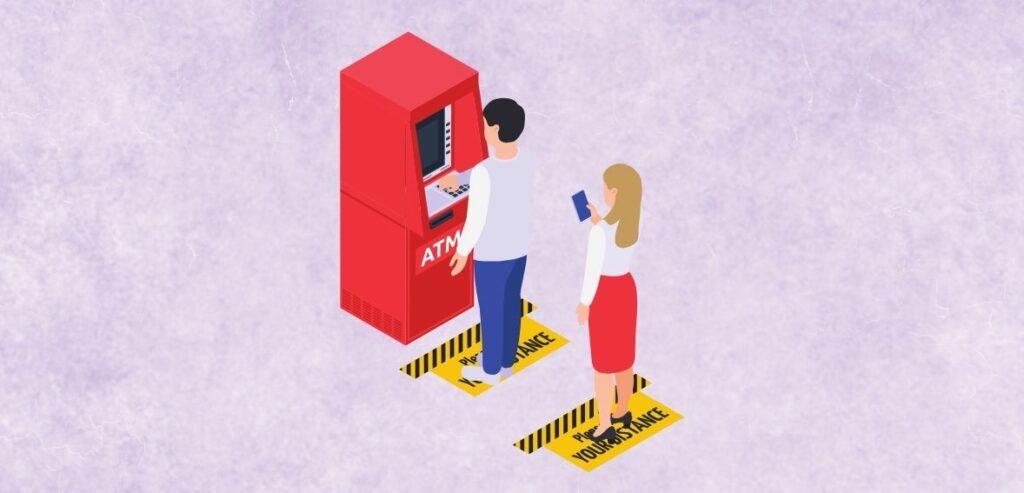Since their widespread introduction by banks in the 1970s, automated teller machines (ATMs) have evolved significantly. The United States only currently has 520,000 to 540,000 active ATMs. Apart from simply withdrawing cash, ATMs nowadays are used to access different functionalities. Users can now deposit cash or checks, transfer funds between accounts, access account balance information, and even pay bills. Plus, technological advancements have led to the emergence of cardless ATMs, which allow transactions using a virtual card or a mobile banking app.
However, using ATMs may incur certain charges, primarily transaction fees and surcharges. So, in this article, we’ll examine ATM transaction fees and how they differ from surcharges.
What is an ATM Transaction Fee?

An ATM transaction fee is a charge imposed by banks or financial institutions to cardholders for ATM services. These fees are not fixed and can vary from bank to bank. Most banks and financial institutions in the US apply this charge exclusively to non-account holders using their ATM service.
However, some banks waive these fees for out-of-network ATM usage, while others reimburse fees imposed by external banks, usually up to a certain limit. It is essential to note that ATM fees can add up, so it is always advisable to check with your bank regarding their policy on ATM transaction fees to avoid any surprises.
What is a Surcharge Fee?
When you withdraw cash from an ATM that is not part of your bank’s network, you may be charged an additional fee other than a transaction fee, called a surcharge. Essentially, the surcharge is just like the transaction fee imposed as a convenience fee that you pay for accessing funds via a non-affiliated ATM. The difference is that this fee is typically imposed by the ATM owner or operator, who may not be your own bank.
Its purpose is to offset the cost of using an ATM outside your bank’s network, and the surcharge can vary. Usually, during the ATM transaction, the surcharge fee will be displayed to you, and you can accept or decline the fee before completing the transaction.
For instance, let’s say you’re a customer of Bank A and you use an ATM from Bank B operated by XYZ retail store. In this scenario, Bank B’s ATM operator may charge you a surcharge fee separate from any fees imposed by either Bank A or Bank B.
Why is the Surcharge Fee so Controversial?

Since their inception, ATM surcharges have been the subject of debate, with opponents arguing that customers pay twice for the same transaction. This is because card issuers typically pass on these fees to consumers, which are payments made to ATM owners. Additionally, some claim these fees create an unfair playing field and disadvantage smaller banks with fewer ATMs than larger institutions. As a result, customers of smaller banks who heavily use ATMs may be inclined to switch to larger banks with more widespread ATM networks.
Why do Some Operators Impose Surcharge Fees?
Installing an ATM on a premises is a great way to boost retailers’ business and provide convenience to their customers. However, it is essential to understand that it involves several upfront and ongoing costs that you must consider before deciding.
Apart from the machine’s cost, there are ongoing expenses that they need to factor in to keep the ATM running and maintained. These include a data line, potential parts costs for repairs, maintenance contracts, signage, and receipt paper. They will also need to allocate extra labor hours for tasks like cash refilling and transaction tracking and possibly face increased insurance premiums.
To cover these expenses and make a profit, independent ATM owners rely on the surcharge fee. The surcharge fee is a fee charged to customers for using the ATM, which ensures that the owner can cover operational costs while making some additional income. The amount of the surcharge fee can vary depending on the location, competition, and other factors.
Why Some Operators Do Not Impose Surcharge Fees?

Source: National Cash
Many major operators offer surcharge-free ATM withdrawal services to drive increased foot traffic. These ATMs can attract “surcharge avoiders,” who actively avoid paying extra fees to use a machine. When these customers opt for an ATM in a convenience store or any other retail establishment, they tend to spend more money—approximately 20-25% more.
Statistics show that ATMs typically handle around 300 transactions per month, with approximately 60% of Americans aged 25-34 and 51% aged 35-49 withdrawing $40 around 8-10 times per month. This significant transaction volume translates into a substantial flow of money through the store, where products await purchase. Consequently, it’s not surprising that stores that install ATMs often experience a sales increase of more than 20%.
Other ATM Withdrawal Charges
Commonly, there are two types of charges other than the surcharge and transaction fee. Here’s a look at each charge:
- Insufficient Funds
When you try to withdraw money from an ATM but don’t have enough funds in your account to cover the requested amount, you may be charged an insufficient funds fee. The bank imposes this fee when the transaction is rejected due to insufficient funds in your account. It’s important to keep track of your account balance to avoid incurring such fees.
- International Transaction Fee
It’s important to be aware of the possible fees associated with international ATM withdrawals. One such fee is the international transaction fee, which is charged when you withdraw at an ATM outside the United States. For example, Bank of America charges a 3% transaction fee for such withdrawals.
Banks With Cheapest ATM Withdrawal Charges

Fortunately, some banks charge significantly lower ATM fees or even waive them altogether. Capital One, for instance, provides free access to Allpoint, MoneyPass, and Capital One ATMs. Capital One won’t charge you for using an out-of-network ATM.
Another option is EverBank, which reimburses you for unlimited ATM fees if you maintain a minimum balance of $5,000 in your Yield Pledge Checking Account. While this may seem like a substantial amount to keep in your checking account, it’s a worthwhile offer, considering EverBank’s limited ATM network. Additionally, EverBank offers some of the industry’s highest interest rates on savings accounts.
Citi, one of the largest banks in the U.S., provides its account holders access to over 60,000 surcharge-free domestic ATMs. Additionally, it waives out-of-network ATM fees for Citi Priority Accounts and Citigold/Citigold Private Client accounts. For travelers, Citi’s ATMs are available in more than 20 countries abroad, offering convenience during trips.
On the other hand, Charles Schwab offers a fantastic option for frequent travelers and those wary of ATM fees with unlimited ATM reimbursements worldwide. While Charles Schwab may not offer the highest savings rates, the benefit of accessing free ATMs worldwide is undoubtedly attractive.
How to Avoid ATM Fees Altogether?
While ATM fees may be beyond your control, there are strategies to avoid or minimize their impact. One approach is to steer clear of out-of-network ATMs whenever possible. Keeping some cash on hand for emergencies can also reduce your reliance on ATMs. Opting for the cash-back option can help you avoid ATM withdrawals altogether. Additionally, withdrawing large amounts at once can make the fees more manageable if you anticipate needing cash from a foreign ATM.
Another important consideration is choosing a bank with reasonable ATM fees. While ATM fees shouldn’t be the sole factor in selecting a bank account, it can save a lot on ATM fees in the long run.
If your bank does charge ATM fees, prioritize using your bank’s own ATMs to avoid additional charges. Most banks offer ATM locator tools on their websites or mobile apps, making it easy to find nearby ATMs. Additionally, inquire whether your bank is part of an ATM network so you can access more surcharge-free options.
You can also consider banking with an institution that offers ATM fee reimbursements as an alternative. With this option, the bank typically refunds any ATM fees you incur at the end of each statement period. While some banks provide unlimited ATM fee reimbursements, others may have a monthly cap, typically up to $20. This feature can help offset the cost of using out-of-network ATMs and make banking more convenient and cost-effective for you.
Some major banks and large non-bank ATM networks provide surcharge-free transactions, particularly at high-traffic locations. Exploring these options can help you reduce ATM fees. Lastly, embracing cashless payment methods can further minimize your reliance on cash and ATM transactions.
Conclusion
ATM transaction fees are charges banks impose for utilizing their services, and surcharges are additional fees levied by ATM owners, often outside your bank’s network.
The surcharges’ controversy underscores the importance of selecting a bank with transparent fee structures and exploring alternative banking options. Some institutions offer fee-free ATM networks or reimbursements, alleviating the burden of additional charges. By strategizing your ATM usage, prioritizing in-network ATMs, and exploring fee-reducing options, you can minimize costs and maximize convenience in your financial transactions.
Frequently Asked Questions
What does an ATM transaction fee include?
ATM transaction fees are among the various charges imposed by banks. Typically, your bank won't levy a fee for transactions conducted at its own ATMs. However, using an ATM outside your bank's network often incurs a transaction fee.
What does “surcharge-free ATM” mean?
A surcharge-free ATM doesn't impose additional fees for withdrawals. When you withdraw cash from such an ATM, you don't need to worry about the ATM owner deducting an extra amount from your funds to cover the fee.
How can I avoid ATM fees?
There are several ways to dodge ATM fees:
-Opt for cash back at retailers.
-Locate ATMs within your bank's network.
-Embrace digital payment apps.
-Withdraw larger amounts less frequently.
-Consider opening an account that reimburses fees.How many times can I use my ATM card without incurring charges?
Typically, banks offer five free transactions at ATMs per month. Any transaction beyond this limit may attract charges.

